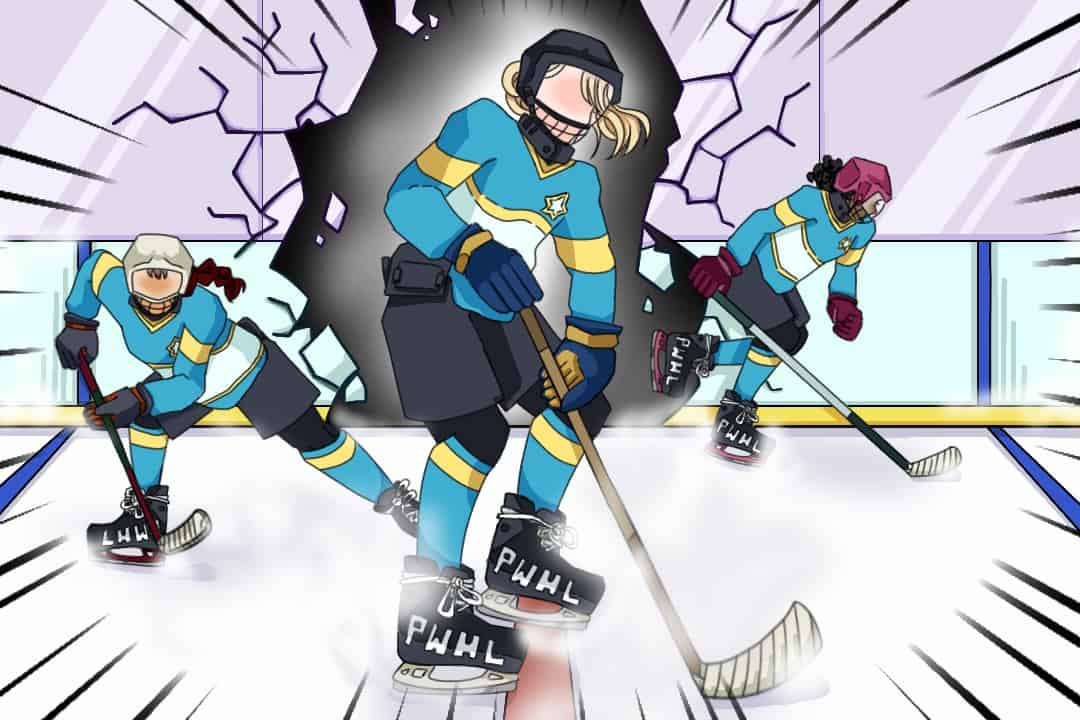The NHL boasts a rich history, including legendary names like Wayne Gretzky and Sidney Crosby. From the camaraderie of watching NHL games in vast arenas to the grassroots action in local rinks, ice hockey itself transcends just being a sport. It embodies undying passion, hard work, and community bonds — qualities that are often overlooked.
As the sport continues to evolve, a new chapter is unfolding for women hockey players. The introduction of the Professional Women’s Hockey League (PWHL) in July 2023 and the beginning of its first season earlier this month marks a significant milestone, as it represents women’s counterpart to the revered NHL.
PWHL stands as a symbol of inclusivity, hope, and resilience, offering a new platform for women to showcase their skills and nurture the sport for generations to come. Most importantly, this league is a groundbreaking opportunity for women to redefine their place in hockey while casting aside historical limitations and stereotypes.
Fixing inequities
Historically, ice hockey has been a bastion of men’s dominance in the professional sports scene; there have been very limited chances for women to display their talent and passion. While, in the last couple of decades, several leagues and associations have been introduced as the highest levels of women’s professional hockey — like the National Women’s Hockey League (NWHL), Canadian Women’s Hockey League, and the Professional Women’s Hockey Players Association (PWHPA) — none have gained the same traction as their counterparts for men. The discrepancy in resources, awareness, and support has led to a lingering imbalance for women.
Born out of the necessity to rectify these past inequities, the PWHL becomes not just a league but a symbol of transformation — a vessel for change in the narrative of women’s hockey.
The PWHL distinguishes itself by its financial stability: it has funding and support from Mark Walter, the billionaire owner of the Los Angeles Dodgers and part-owner of Chelsea FC, and women’s tennis icon Billie Jean King. This sets it up not just as the only national-level women’s league but as one that has the potential to withstand the financial challenges it may face.
With hopes of surpassing the NWHL, which faced criticism over truncated salary caps, the PWHL’s clear sources of funding address previous league issues. The league also features many players who previously competed in the PWHPA, which was a temporary organization established by players until a more sustainable league emerged.
Changing narratives
Notable names, including Olympic gold medallists Sarah Nurse, Natalie Spooner, and Blayre Turnbull, have already signed with the Toronto team, which is set to use the Mattamy Athletic Centre — the renamed but historic Maple Leaf Gardens — as their home ice. None of the six teams — in Toronto, Ottawa, Montréal, Boston, New York, and Minnesota — have official names yet.
These medallists’ involvement establishes the PWHL as a platform for inspirational role models for young girls across North America, and one that could help us transition to a new era where women’s hockey can stand on equal footing with men’s hockey. As future generations explore the layers of hockey history, there is optimism among players and fans that the women’s teams’ legends will share the spotlight with iconic men’s players like Gretzky and Crosby. And, with newfound significance and professionalism, the league has the potential to attract sponsors, media attention, and fans.
Leagues such as the PWHL will hopefully play a pivotal role in shaping the future of ice hockey, fostering a more inclusive and diverse sport for all. There is still much to accomplish, but this league will make a start as its first season goes into full swing, running from now until the end of June.



No comments to display.